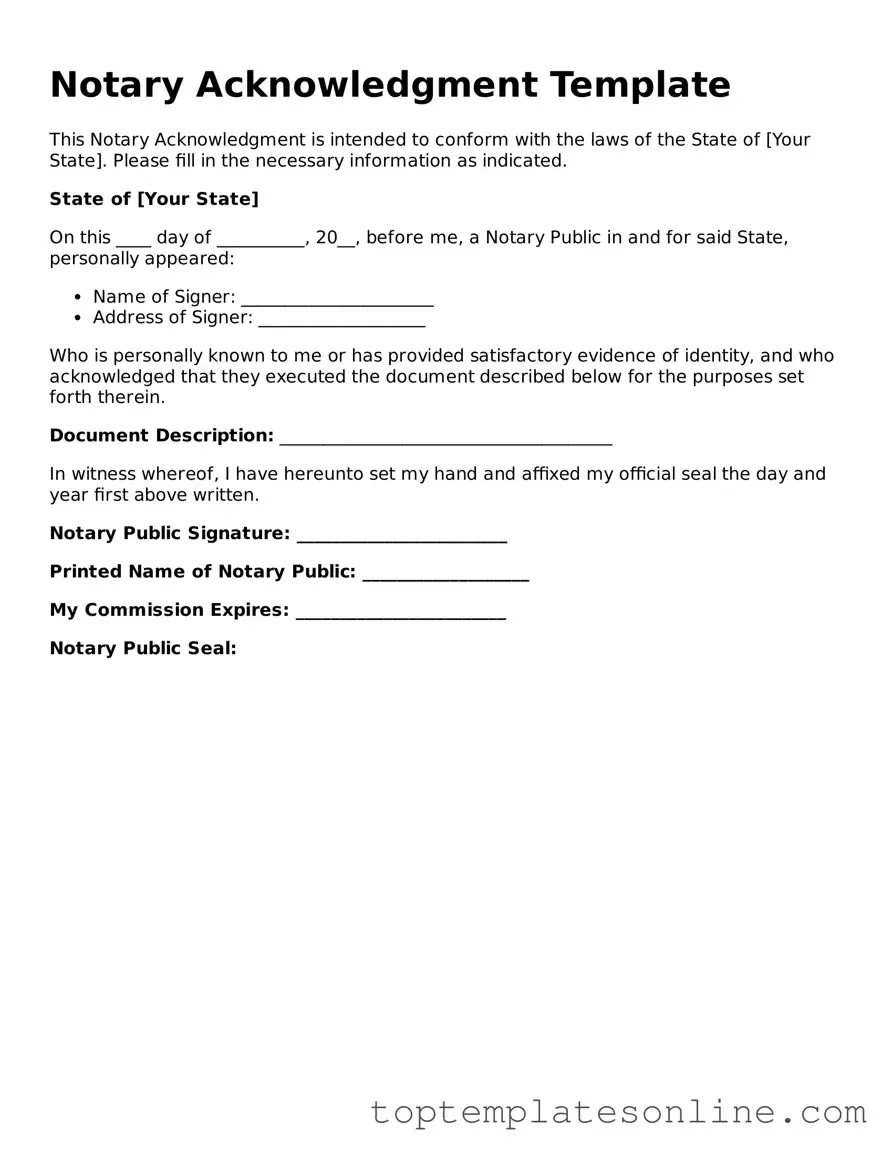Attorney-Approved Notary Acknowledgement Form
The Notary Acknowledgement form is a legal document that verifies the identity of a signer and confirms that they signed a document willingly and without coercion. This form plays a crucial role in ensuring the authenticity of various legal transactions. By providing a notary's seal and signature, it helps to prevent fraud and enhances the reliability of the documents involved.
Customize Notary Acknowledgement Here
